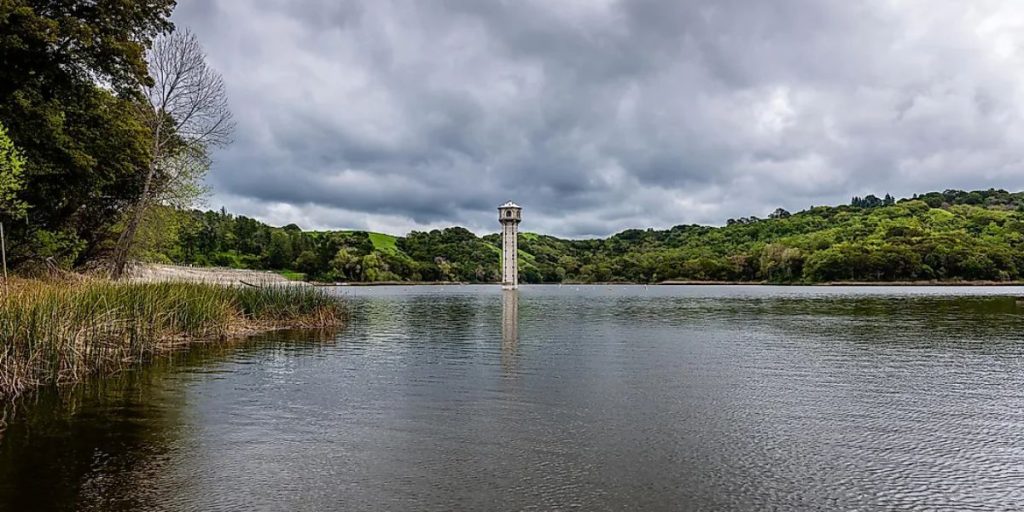California offers summer excitement in big-city social scenes and peaceful natural settings. Pacific Coast residents and tourists appreciate the sandy beaches, but they also visit the many famous national parks and scenic trails in the shadows of large mountain ranges. Many organic and manmade lakes are perfect for a peak-heat dive, casting a bobber, boating, or just absorbing its charm from the shoreline. This sounds appealing, but the amount of native snakes may deter some.
The California Department of Fish and Wildlife lists approximately 50 native snake species and many invasive serpents that are hard to spot. These cold-blooded reptiles live on sunny dryland but are good swimmers and often swim in shallow water. Enjoy the lakes this summer, but watch out for those little bopping heads at these six entries.
Tahoe Lake
With a depth of 6,229 feet, Lake Tahoe is the second-deepest US lake after Oregon’s Crater Lake. In addition to its size, Lake Tahoe is known for its beautiful waters and stunning Sierra Nevada mountain views. Nevada shares portions of its shoreline, although Northeastern California dominates.
Summer tourists provide excitement to this 191-square-mile beauty, but serpents can still swim in undisturbed areas. Venomous species include Great Basin and Western Diamondback rattlesnakes. However, they rarely act violently in water. Visitors to the lake may see non-threatening common water snakes and garter snakes.
Machado Lake
Machado Lake, a 31-acre urban pond, was constructed for flood control and irrigation in Los Angeles. This little artificial structure is at Ken Malloy Harbor Regional Park in Harbor City, South Los Angeles, near to Los Angeles Harbor College. The Machado Lake Ecosystem Rehabilitation Project finished in 2017. This much-needed restoration project removed sediment from the lake bottom, installed trash-removal systems, and removed many other contaminants while oxygenating the water (which reduced algal blooms and improved ecosystem viability).
Machado Lake is now healthier for humans and the Southern water snakes that have colonized this community swimming hole, possibly the illicitly released offspring of former pets.
Lafayette Reservoir
The Lafayette Reservoir has been home to the elusive ring-necked snake, the sharp-tailed snake, the light yellow/brown-spotted gopher snake, and the brazen California kingsnake. The four non-venomous species are mostly safe to humans and pets. Visit this manmade Central Californian stream with caution, as any species with a bite can break skin.
Lafayette Reservoir, west of Lafayette and south of Highway 24, is open year-round for day usage. This includes hiking/jogging, picnicking, fishing, and boating (row and pedal boats are accessible on-site).
Bear Gulch Reservoir
Bear Gulch Reservoir is another Central California manmade oasis. Pinnacles National Park’s Bear Gulch Reservoir is not to be confused with Atherton’s small, circular watering hole. Amidst the inspiring spired rock formation, the narrow, bendy, almost snake-shaped body of water is part of an ecosystem with 14 snake species, including the garter snake, gopher snake, and Western rattlesnake, and many other interesting reptiles, including the threatened red-legged frog.
Read More: Top 5 Must-Try Foods in California Before You Die – Even the Photos Will Make You Drool
The one-mile Moses Spring walk leads to this pleasant area in the park. Take a light meal or stay out late to catch a stunning sunset, but remember to bring headlights for the return trip and step carefully.
Folsom Lake
25 miles east of Sacramento in the Sierra Nevada foothills, Folsom Lake State Recreation Area offers Californian city dwellers a fast escape to nature. Boaters, waterskiers, and anglers love the park’s main lake. At this reservoir, trout, catfish, largemouth/smallmouth bass, and perch coexist alongside Southern water snakes and rattlesnakes.

These semi-aquatic species can skirt near the surface when the waterline is low and debris is plentiful, but during high water seasons, more snakes can be found on the pathways. Folsom Lake gathers the North Fork, South Fork, and American River, which flows south to our previous entry.
Lake Natoma
Natoma Lake is a few miles downstream from Folsom Lake. Its four-mile-long, snake-shaped body presses against the Mississippi Bar nature preserve and is met by the Sacramento State Aquatic Center at its southern tip and the Folsom Powerhouse State Historic Park at its northern tip, which once housed “the greatest operative electrical plant on the American continent”.
Natoma, with its 5-mph speed limit, attracts crew races, sailing, and recreational paddling. The invasive Southern water snake feeds on native fish and amphibians while being protected by the motorboat restriction.
Also Read: Car-Crazy California: Save Yourself from Rising Insurance Costs in The Golden State
Snakes frighten us, but they are harmless in the big picture. Some of California’s 50+ snake species are dangerous, such the seven rattlesnakes, but they avoid humans and offer warning before biting. However, slithering reptiles may scare swimmers, so look around before entering these six lakes.